Is it a Project or an Activity? Project-Based Learning and its Cousins
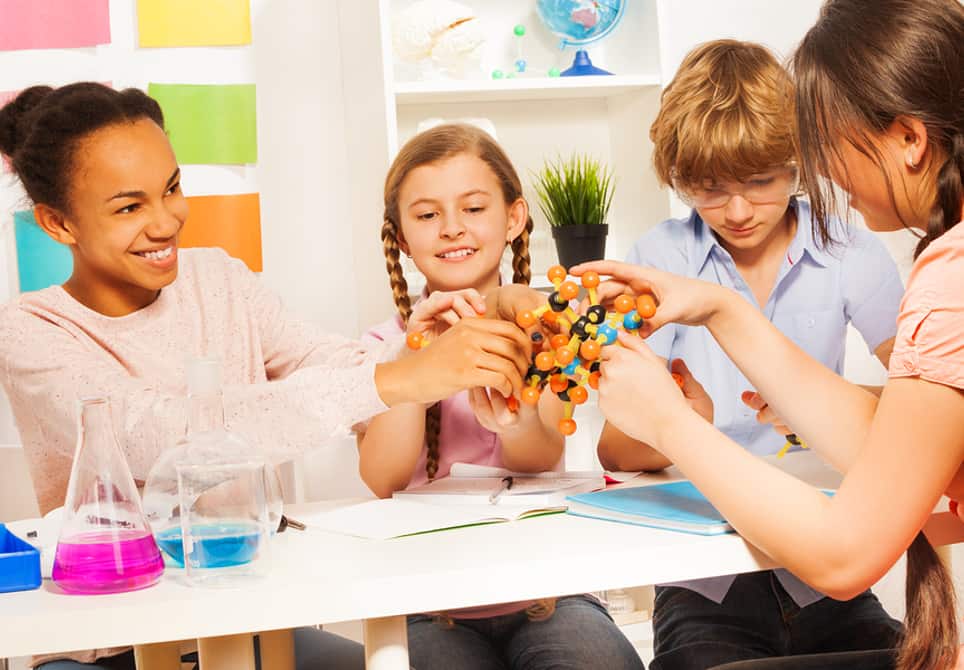
A project is a multistep activity undertaken by an individual or group to achieve a particular aim. With that broad definition there’s a lot of project-based learning happening in schools these days. Some is better than others and there are a lot of variations: some thin, some deep; some teacher-led, some student-driven; some with clear deliverables, and some very open-ended.
In an effort to help educators select a strategy appropriate for intended outcomes, this post is an attempt at providing a framework for variations on project-based learning (PBL) and part of our project-based world campaign.
Gold Standard PBL
Buck Institute for Education (BIE) defines project-based learning as “a teaching method in which students gain knowledge and skills by working for an extended period of time to investigate and respond to an engaging and complex question, problem or challenge.” Their Gold Standard PBL Essential Project Design Elements include:
- Key Knowledge, Understanding and Success Skills. The project is focused on student learning goals, including standards-based content and skills such as critical thinking/problem solving, collaboration and self-management.
- Challenging Problem or Question. The project is framed by a meaningful problem to solve or a question to answer, at the appropriate level of challenge.
- Sustained Inquiry. Students engage in a rigorous, extended process of asking questions, finding resources and applying information.
- Authenticity. The project features real-world context, tasks and tools, quality standards or impact. Or it speaks to students’ personal concerns, interests and issues in their lives.
- Student Voice & Choice. Students make some decisions about the project, including how they work and what they create.
- Reflection. Students and teachers reflect on learning, the effectiveness of their inquiry and project activities, the quality of student work, obstacles and how to overcome them.
- Critique & Revision. Students give, receive and use feedback to improve their process and products.
- Public Product. Students make their project work public by explaining, displaying and/or presenting it to people beyond the classroom.
We think that is a good and useful set of design principles. Most of it applies not only to project-based learning but also to a group of related instructional strategies. We see seven key dimensions (design variables) for projects and related learning activities:
- Outcomes: Clearly defined up front or open-ended
- Directed: Teacher designed or student designed
- Scope: Narrow or integrated
- Steps: Short problems or extended multi-step project
- Approach: Individual or team
- Manager: Teacher managed or student managed
- Combinations: PBL combined with other strategies
Each of these dimensions offers a series of tradeoffs. The continua presented below aren’t a range of bad to good, they are a series of instructional strategies that should be consciously selected for a set of intended outcomes.
Outcomes: Clearly Defined Up Front or Open-Ended
Projects typically have a set of desired outcomes and defined deliverables; often knowledge, skills as well as dispositions. Desired outcomes are often incorporated into a rubric assessment and clearly communicated up front.
Learning experiences with less well-defined content outcomes (although they may be quite specific to a particular skill set) include:
- Inquiry-based learning focuses on questioning, critical thinking and problem-solving. “The idea behind true inquiry-based learning is to ignite your students’ curiosity, the spark that motivates them and makes them want to learn more,” said Chicago teacher Georgia Mathis. She identifies three or four lines of inquiry explored simultaneously over a five-week period allowing student voice and choice in production of something that demonstrates acquisition of knowledge and understanding. With well-defined lines of inquiry and guidance in research and production, inquiry-based learning is very similar to project-based learning.
- Applied learning emphasizes hands on experiences. Like Project Lead The Way courses, they may be a series of teacher-led activities or more open-ended projects.
- Maker education is only bounded by the materials, tools, and creativity of teachers and learners. It’s a design and tinkering experience based on a particular challenge and/or set of resources (see 18 part makerspace series by Lindsey Own).
- Exploration-based learning includes virtual science environments, virtual reality expeditions, and outdoor learning experiences. Pathways may be limited, directed, adaptive or open-ended.
- Creative play, such as the Global Cardboard Challenge, lets children explore their interests and passions through open-ended activity but can be relatively specific about desired outcomes including creativity, critical thinking, resourcefulness, perseverance and teamwork.
| Well defined outcomes → Identified options → Guided discovery → Open ended |
Directed: Teacher Designed or Student Designed
Project topics and deliverables can be defined by a teacher as they are at most New Tech Network schools.
Project topics and deliverables can be defined by a teacher as they are at most New Tech Network schools.
Teachers at Katherine Smith Elementary in San Jose ( a New Tech affiliate) use driving questions to scope projects (like the primary geometry project right). Student products may be similar but not identical.
At Harmony Public Schools, projects are co-designed by students and teachers. Project Director Burak Yilmaz adds, “Learning looks fun and engaging in Harmony thanks to our unique PBL approach.” (See STEMSOS.com for more info on the model.)
Senior projects often share a common deliverable framework but leave the topics wide open. Examples include policy projects at Chavez Schools and Catalyst research projects at Singapore American School.
Moving to the right on teacher-versus student-directed continuum increases voice and choice and it increases variability of topics and outcomes and could lead to learning gaps (what some critics call the “swiss cheese” problem).
| Teacher defined → Product options → Topic options → Open ended |
Scope: Narrow or Integrated
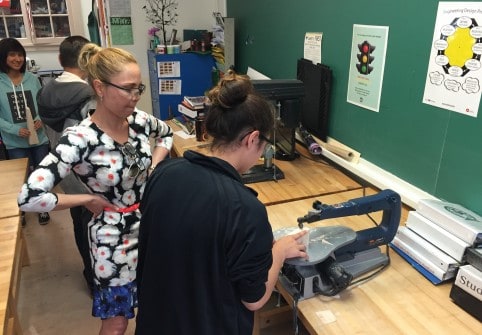 A project can be narrowly defined or covering multiple subjects. Schools in the New Tech and High Tech High networks help students frame projects that integrate typical (e.g., social studies and English) and surprising (e.g., math and art) subjects. Students in Harmony’s Learner-Centered STEM model are required to complete long-term interdisciplinary projects that connect STEM to the Humanities.
A project can be narrowly defined or covering multiple subjects. Schools in the New Tech and High Tech High networks help students frame projects that integrate typical (e.g., social studies and English) and surprising (e.g., math and art) subjects. Students in Harmony’s Learner-Centered STEM model are required to complete long-term interdisciplinary projects that connect STEM to the Humanities.
The 9th grade STEM class at El Paso High (right) combines software design, physics, math and a little carpentry (and is in Spanish one week, English the next).
Most real world problems are multidisciplinary in nature but supporting them in school requires collaboration across departments and schedules. In addition to content knowledge, even narrowly defined project typically teach research, self- management, communication and often collaboration skills.
| Focused topic (modern poetry) → Integrated (bioinformatics) → Multidisciplinary (STEAM) |
Steps: Problem or Project
Problem-based learning is usually confined to a subject (like math) and includes short tasks or lines of inquiry. The product or proposed solution may be expressed in writing or a presentation.
Projects typically require more steps including independent inquiry and require creation of a complex product for presentation to a public audience. (See John Larmer’s discussion of Project Based Learning vs. Problem Based Learning vs. XBL).
| Problem → Small project → Large long-term project |
Approach: Individual or Team
Projects can be assigned to individuals, pairs or teams. Team projects teach important lessons about collaboration but can give rise to a free rider problem where some team members don’t make an equal contribution. A common solution is identifying and assessing individual contributions to the team effort.
| Individual project → Team with individual contributions → Team project |
Manager: Teacher Managed or Student Managed
In business, a project manager is responsible for timeline, staffing, resources, budget and deliverables. She may have to negotiate all of these with an executive sponsor. In schools, timelines and budgets may be smaller and teachers are likely to control approach (individual or team), but there’s still the question of who manages time and deliverables.
Ron Berger, EL Education, encourages continuous assessment in a project-based environment. “If the teacher isn’t assessing all along the way then the final product will not typically show the high quality of success,” he explains. “You don’t want to undermine the quality of the final product by taking away the scaffolding, but you want a sense of individual student levels of understanding throughout that flow.” Ron suggests, “Don’t wait; check along the way.”
However checking in can turn into management, where a teacher is directing each step. The key to building student agency and project management skills is requiring student project managers to make adjustments in their approach, schedule and work product. If a teacher manages every step of the way it may lead to better deliverables, but students lose the opportunity to learn valuable project management lessons.
Leaders at Harmony Public Schools, a PBL network that prioritizes deeper learning, are very intentional about training teachers to recognize new roles as co-project managers with students. At Harmony, this means a ” strong system of on-demand support.”
| Teacher managed → Heavy scaffolding → Teacher as coach → Student managed |
Combinations: PBL Combined with Other Strategies
Even well-known “wall-to-wall” project-based schools like Bulldog Tech in San Jose use a variety of strategies. For example, Bulldog math teachers use problem-based learning: short activities that don’t result in a public product.
A new generation of schools are combining the benefits of personalized learning with project-based learning. Thrive Public School founder Dr. Nicole Assisi said there was no risk of learning gaps at Thrive given their approach to blended and personalized learning. While blended learning rotations fill in content gaps, “project-based learning is necessary to engage learners, to build enthusiasm and support authentic work and exhibition,” said Assisi. She added, “If school is just skills building and no application, where’s the joy?”
In addition to personalization strategies in a blended environment, projects are often combined with both more prescriptive strategies such as whole group instruction and lab experiments as well other inquiry-based strategies including Socratic Seminars and literature discussions.
| Projects → Projects + personalization → Multiple strategies |
Project-based learning is a high engagement strategy that can lead to powerful learning outcomes, if well designed and combined with supports that ensure that all students are prepared to benefit and enjoy the rewards of a quality public product.
This blog is part of “It’s a Project-Based World” series. To learn more and contribute a guest post for the series, see the Project-Based World page. Join in the conversation at #projectbased.
For more, see:
- What’s Next? Personalized Project-Based Learning
- Schools for Wisdom: Personalized Project-Based Learning
- Project-Based Learning Models the Work World
Stay in-the-know with all things EdTech and innovations in learning by signing up to receive the weekly Smart Update. This post includes mentions of a Getting Smart partner. For a full list of partners, affiliate organizations and all other disclosures please see our Partner page.




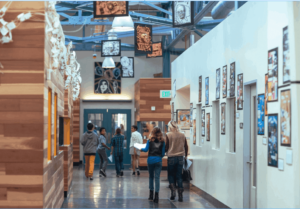
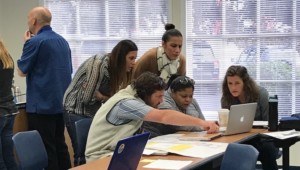
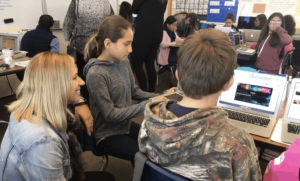
Lindsey Own
I might add a variable about "innovation" or applicability... From understanding/analyzing to applying/problem-solving. This is a variable that definitely shows up in maker/tinkering learning experiences. Are students building to better understand what exists, or are they building to create something new? Like the other variables you've identified, neither is intrinsically better than the other in every situation, but that difference is definitely something I try to be aware of as we develop new learning experiences for our makerspace.
Great synthesis of these different teaching/learning strategies into a means of comparing them along different scales, rather than just categorizing by their "brand names" !
Replies
Tom Vander Ark
Thanks Lindsey, great point and good addition. I was excited to see a pretty good example of moving from understanding to applying in a fourth grade flex blend in SPARK Schools, S Africa
http://www.gettingsmart.com/gettingsmart-staging/2015/09/innovative-blend-could-be-the-spark-for-south-africa/
Rebecca
What's also interesting to note is the scoring of projects. Is it an overall average? Are there "points" and are they truly balanced in weight? Do they need to be? I think where the conversation of Project Based Learning gets really juicy is when we think about what is selected in terms of content, to what level, how it will be scored and to what degree do the students play or lead? Thank you for sharing the differences. This topic is too often only topically covered in professional learning conversations and articles.